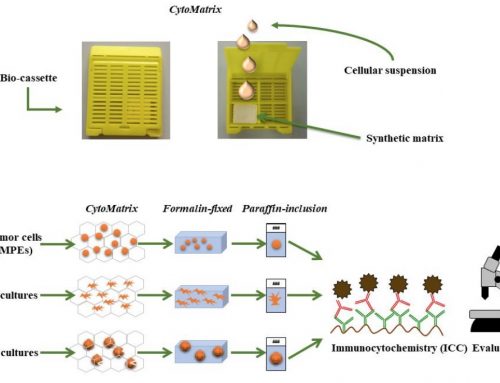COMPARISON BETWEEN TRADITIONAL AND INNOVATIVE CYTOLOGICAL METHODS FOR THE DIAGNOSIS OF SOLID LESIONS OF THE BILIO-PANCREATIC TRACT
THESIS by Alessia Rossi – CytoMatrix 2019 TLSB
Pancreatic neoplasms pose particular diagnostic difficulties due to their macroscopic morphology, their microscopic heterogeneity and the difficulty in obtaining preoperative diagnostic material. Sampling for cytological examination is a widely used practice to obtain diagnostic material and is indicated whenever the information acquired can potentially modify the therapeutic approach. The main indications include: differential diagnosis of benign lesions from malignant lesions, staging of malignant neoplasms and diagnosis of malignancy before undertaking chemotherapy or radiation therapy (1). The improvement of cytological sampling techniques in pancreatic neoplasms has made it possible to achieve high levels of diagnostic accuracy in terms of sensitivity and specificity for both cystic and solid lesions (2,3). One of the best techniques for obtaining samples for cytological examination is represented by fine needle aspiration under ultrasound endoscopy (EUS-FNA). This technique, applied to pancreatic lesions since the 1990s, is currently used extensively and has given excellent results particularly in solid lesions of the pancreas (2). More recently, techniques have been developed to obtain histological material using the same approach (4). An important contribution to this improvement was offered by Pathologists and by the Techniques of the Pathological Anatomy Laboratories. In particular, the possibility of optimizing the use of the material in order to obtain better preparations in qualitative and quantitative terms in order to apply ancillary techniques has been developed with the use of new approaches such as ‘cell blocks’ and the THINPrep technique (5,6 , 7). More recently, other methods have been made commercially available and other approaches are at an advanced stage of experimentation. The purpose of the thesis was to compare a traditional cytological method that represents the ‘standard’ for the EUS-FNA of pancreatic lesions in the Pathological Anatomy of the 5 Ospedali Riuniti University Hospital of Ancona with a new generation method not yet commercially available in order to evaluate its applicability to clinical practice.


